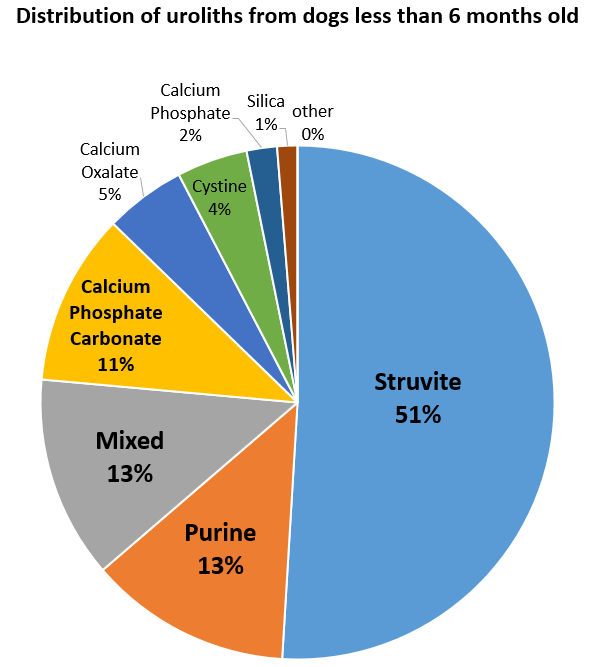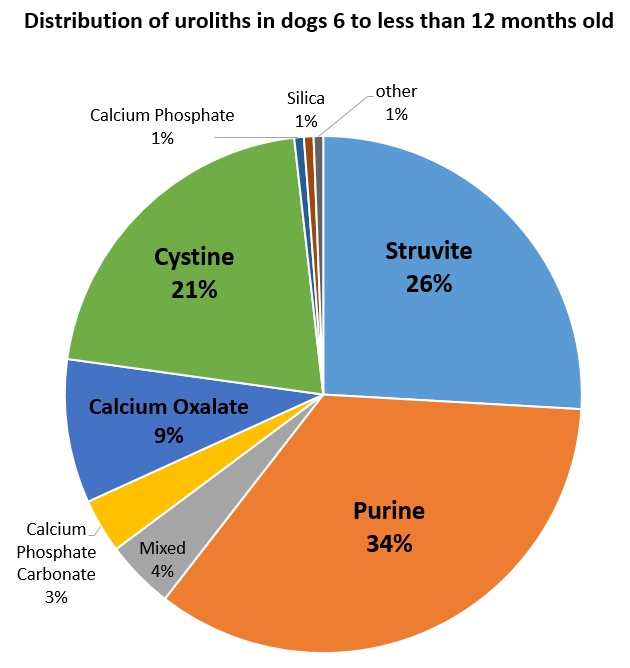Image of the month
What Types of Uroliths Form in Puppies?
In 2022, the Minnesota Urolith Center analyzed stones from almost 500 puppies, age less than 12 months. We separated the data into two groups, dogs less than 6 months old and dogs 6 to less than 12 months old.
In dogs less than 6 months old, struvite was the most common stone (51%). Forty-two percent were female and 58% were male. In our experience, these stones are usually infection-induced even in male dogs.1,2 Another infection-induced stone, calcium phosphate carbonate, was found in 11%. In total, urinary tract infection was considered the underlying abnormality in 62% of dogs less than 6-months-old.
In dogs 6 to less than 12 months old, urate was the most common stone (35%). Sixty-two percent were breeds at risk for hepatic portovascular anomalies (e.g., Yorkshire terrier, Maltese, Pug, Miniature Schnauzer, Shih Tzu, others) and 38% were breeds at risk for a genetic variant causing hyperuricosuria (e.g., Dalmatian, English Bulldog, others).3 Infection-induced stones were also common, comprising 29% of dogs 6 to less than 12 months old.
Cystine stones increased from 4% in dogs less than 6-months-old to 21% in dogs 6 to <12 months old. All were from males (88% were intact and 12% were neutered).
A diagnosis of stones in a puppy is an indication to consider urine culture, genetic testing or evaluation of liver function (based on breed and predicted stone type) to quickly arrive at the cause in order to formulate effective strategies to prevent stone recurrence.


Resources
1. Lulich JP, Osborne CA, Johnston GR: Nonsurgical correction of infection-induced struvite uroliths and vesicourachal diverticula in an immature dog. J of Small Anim Pract 1989; 30:613-617.
2. Osborne CA. How would you manage a urolith in a puppy? DVM 360. October 31.2003.
3. Karmi N, Brown EA, Hughes SS, et al. Estimated frequency in the canine hyperuricosuria mutation. J Vet Intern Med 2010;24:1337–1342.